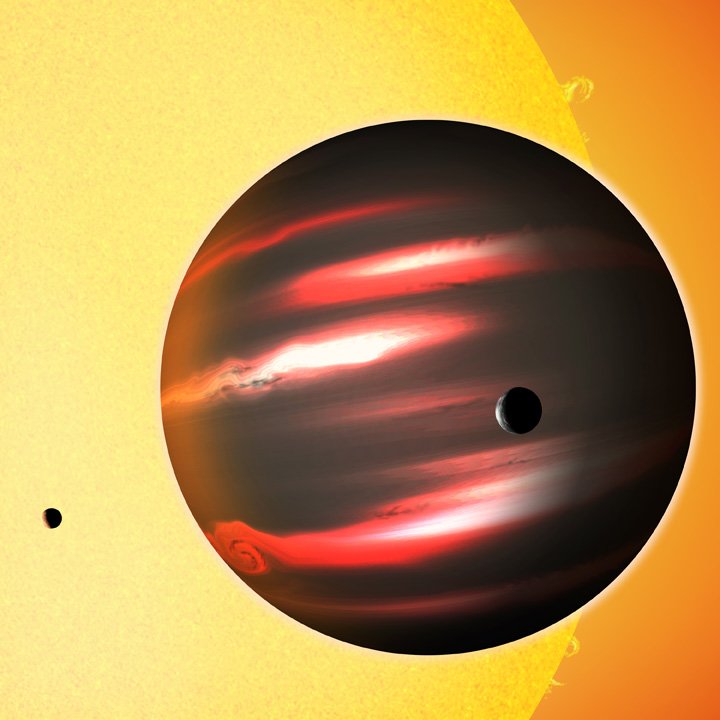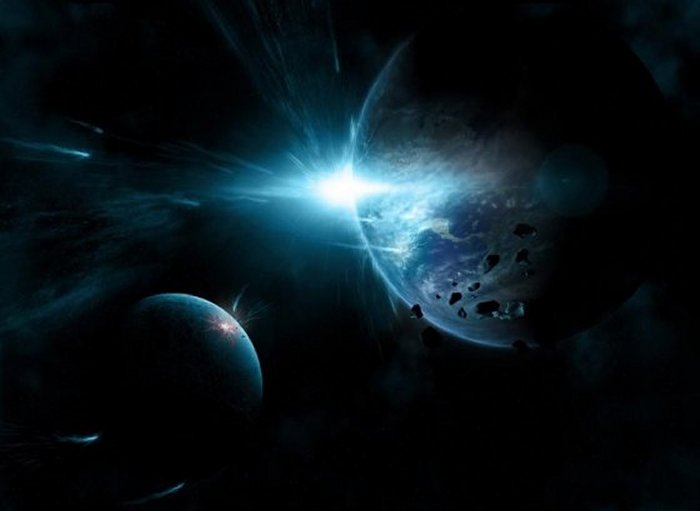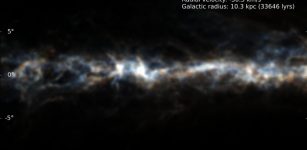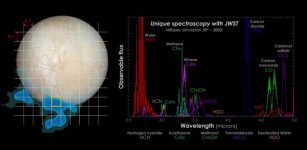Weird Alien World Shrouded In Extreme Darkness Found In The Draco Constellation
MessageToEagle.com – The Universe is full remarkable wonders that challenge our imagination and TrES-2b is one of them.
To say that TrES-2b is a dark planet is an understatement. Actually, TrES-2b is the darkest exoplanet ever discovered.
This extraordinary, mysterious alien world is blacker than coal! What exactly is causing this extreme darkness remains unclear.
“TrES-2b is considerably less reflective than black acrylic paint, so it’s truly an alien world,” said astronomer David Kipping of the Harvard-Smithsonian Center for Astrophysics (CfA).
TrES-2b orbits the star GSC 03549-02811, which is located about 750 light-years away in the direction of the constellation Draco. (One light-year is about 6 trillion miles.)

This extremely dark world is in fact a Jupiter-sized gas giant that orbits its star at a distance of only three million miles.
The star’s intense light heats TrES-2b to a temperature of more than 1,800° Fahrenheit.
The temperature makes is much too hot for ammonia clouds. Instead, its exotic atmosphere contains light-absorbing chemicals like vaporized sodium and potassium, or gaseous titanium oxide.
Yet none of these chemicals fully explain the extreme blackness of TrES-2b.
See also:
10 Most Bizarre And Record Breaking Alien Worlds
Was Mysterious Planet 9 Stolen By Our Sun 4.5 Billion Years Ago?
55 Cancri e – First Detection Of Gases In Atmosphere Of Exotic Super-Earth
“It’s not clear what is responsible for making this planet so extraordinarily dark,” stated co-author David Spiegel of Princeton University.
“However, it’s not completely pitch black. It’s so hot that it emits a faint red glow, much like a burning ember or the coils on an electric stove.”
TrES-2b is believed to be tidally locked like its moon, so one side of the planet always faces the star. And like our moon, the planet shows changing phases as it orbits its star. This causes the total brightness of the star plus planet to vary slightly.
“By combining the impressive precision from Kepler with observations of over 50 orbits, we detected the smallest-ever change in brightness from an exoplanet: just 6 parts per million,” said Kipping. “In other words, Kepler was able to directly detect visible light coming from the planet itself.”

The extremely small fluctuations proved that TrES-2b is incredibly dark. A more reflective world would have shown larger brightness variations as its phase changed.
TrES-2b reflects less than one percent of the light that falls on it, making it blacker than any planet or moon in our solar system. Astronomers aren’t sure what vapors in the planet’s superheated atmosphere cloak it so effectively.
This amazing alien dark world is yet another wonder of the Universe.
Copyright © MessageToEagle.com. All rights reserved. This material may not be published, broadcast, rewritten or redistributed in whole or part without the express written permission of MessageToEagle.com.










